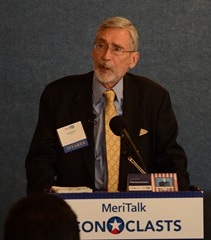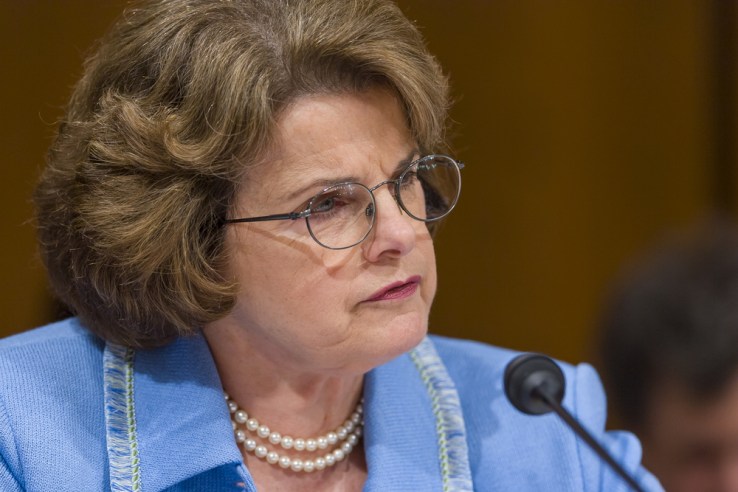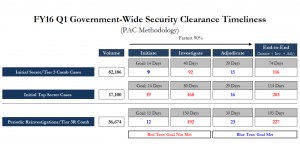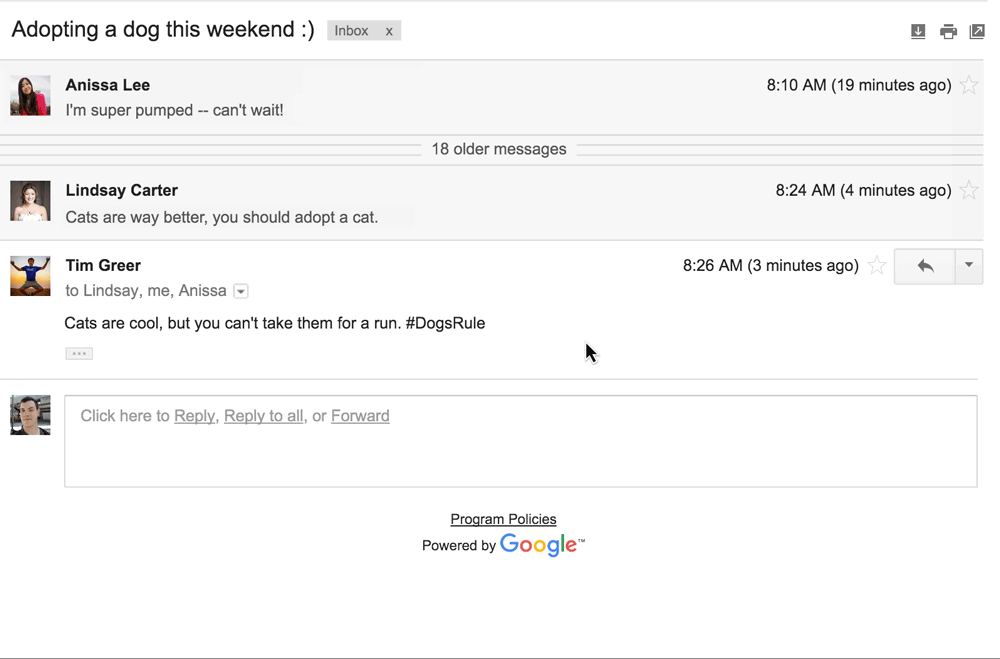Why are we letting our IT infrastructure fall to pieces?
Former congressman and Secretary of Transportation Ray LaHood recently asked this question (without the insertion of “IT”) about the nation’s aging infrastructure.

LaHood’s article focused on an oft-discussed topic–the nation’s crumbling physical infrastructure. He notes that in the past 12 months, broken dams in South Carolina caused flooding and fatalities, a massive gas leak in Los Angeles sickened and displaced thousands of families, and residents of Flint, Mich., found unsafe lead levels in their drinking water. In Washington, D.C., the region’s Metrorail system might be facing line closures to make long-neglected safety repairs.
Our nation’s refusal to perform critical maintenance, to invest in our public infrastructure, and to take care of our roads, rails, bridges, and pipelines has been widely discussed and the costs well documented. As Rosabeth Moss Kanter, a Harvard business professor and the author of “Move,” a recent book on the subject, said in The New Yorker recently, “Infrastructure is such a dull word. But it’s really an issue that touches almost everything.”
Only recently, though, has a similar situation–the government’s reliance an outdated technology–surfaced as an issue. Federal Chief Information Officer Tony Scott has called it a “crisis” to rival the Y2K computer glitch.
Dave Powner, Director of IT Management Issues at the Government Accountability Office (GAO), noted that some agencies are running tens of millions of lines of long-deprecated software code, such as COBOL and assembly languages. Less frequently mentioned is the aging infrastructure itself–switches, routers, servers, desktops, mainframes, etc. Recent research has suggested that a substantial portion of the government’s IT hardware has already reached LDoS (Last Day of Support), which means it is not receiving updates, security alerts or patches, and so on. In the next two years, an ever greater portion of that infrastructure will reach that same stage.
Along with increased security risks and vulnerability to cyberattacks, these outmoded systems can’t support growing demands for greater mobility, collaboration, data analytics, etc. Finally, they are also at higher risk of simply breaking down. Consider what a catastrophic blow that could be to the business of government–tax collection, benefit payments for veterans, monthly checks for Social Security recipients, air traffic control, and so on. Recent reports note that the Coast Guard is “overwhelmed” by the daunting task of updating its legacy IT infrastructure. That could be a matter of when, not if, GAO’s Powner says.
While we are at it, we should also recognize the need to modernize the processes by which government buys and operates its IT infrastructure, which is a major part of the reason why it’s been so hard to modernize. But more about that in another column.
Former White House chief of staff and now Chicago Mayor Rahm Emanuel a few years ago pronounced a rule that now bears his name: “Never let a serious crisis go to waste.”
To quote Kanter once again and note its applicability to the government’s aging IT infrastructure: “This is the heart of our problem: infrastructure policy has become a matter of lurching from crisis to crisis, solving problems after the fact rather than preventing them from happening. We’ve turned into short-term-fix addicts.”
The president’s legislative proposal to establish an Information Technology Modernization Fund would support the transition to a more secure, efficient, and modern IT infrastructure. It deserves support from all of us.
Alan P. Balutis is Senior Director and Distinguished Fellow, U.S. Public Sector, at Cisco Systems.

 Deltek estimates contractor-addressable spending on the U.S. government’s mission-critical programs will increase by $18 billion to about $682 billion in fiscal year 2017 if Congress approves the White House’s latest budget request. The report forecasts continued growth in the Federal cybersecurity, big data analytics, health care information technology and infrastructure segments despite a projected small decline in overall contractor-addressable IT spending for FY 2017. “Government demand looks particularly strong for…areas that align with the Obama administration’s focus on modernization, health care and veterans services,” said Deniece Peterson, Deltek’s director of
Deltek estimates contractor-addressable spending on the U.S. government’s mission-critical programs will increase by $18 billion to about $682 billion in fiscal year 2017 if Congress approves the White House’s latest budget request. The report forecasts continued growth in the Federal cybersecurity, big data analytics, health care information technology and infrastructure segments despite a projected small decline in overall contractor-addressable IT spending for FY 2017. “Government demand looks particularly strong for…areas that align with the Obama administration’s focus on modernization, health care and veterans services,” said Deniece Peterson, Deltek’s director of  The director of the FBI suggested Thursday that his agency paid at least $1.3 million to an undisclosed group to help hack into the encrypted iPhone used by an attacker in the mass shooting in San Bernardino, Calif.
The director of the FBI suggested Thursday that his agency paid at least $1.3 million to an undisclosed group to help hack into the encrypted iPhone used by an attacker in the mass shooting in San Bernardino, Calif. Apple says these requests typically seek information about a user’s iTunes or iCloud account, and each requires a search warrant. That information could then be used to help investigators prevent planned crimes from taking place or, after the fact, assembling a criminal case against someone. Privacy advocates are alarmed by the growing number of these
Apple says these requests typically seek information about a user’s iTunes or iCloud account, and each requires a search warrant. That information could then be used to help investigators prevent planned crimes from taking place or, after the fact, assembling a criminal case against someone. Privacy advocates are alarmed by the growing number of these  Cybersecurity is no longer the exclusive domain of corporate IT shops. In the past and in some quarters today, cybersecurity is still viewed as “some IT thing.” But the companies that take this view do so at their own peril. The specter of data breaches and denial-of service attacks are risks facing every business using
Cybersecurity is no longer the exclusive domain of corporate IT shops. In the past and in some quarters today, cybersecurity is still viewed as “some IT thing.” But the companies that take this view do so at their own peril. The specter of data breaches and denial-of service attacks are risks facing every business using  Microsoft announced last November that the company would begin offering cloud services from the United Kingdom, with the firm saying those services would extend to government organizations. Department of Defense CIO Terry Halvorsen has evangelized for the Pentagon to be more willing to allow cloud vendors to host sensitive DOD data. He would like about 50 DOD personnel to do a stint in the private sector in the coming year, and likewise bring about 50 IT hands from
Microsoft announced last November that the company would begin offering cloud services from the United Kingdom, with the firm saying those services would extend to government organizations. Department of Defense CIO Terry Halvorsen has evangelized for the Pentagon to be more willing to allow cloud vendors to host sensitive DOD data. He would like about 50 DOD personnel to do a stint in the private sector in the coming year, and likewise bring about 50 IT hands from 
 Data collected by the Federal government should be open and accessible to public by default, according to a group of lawmakers. According to Sen. Brian Schatz, D-Hawaii, at a discussion in Washington on Thursday, agencies these days just release data using virtual documents wherein the searcher of the information is expected to do their own digging. One of the Federal agencies that will be covered by this bill will
Data collected by the Federal government should be open and accessible to public by default, according to a group of lawmakers. According to Sen. Brian Schatz, D-Hawaii, at a discussion in Washington on Thursday, agencies these days just release data using virtual documents wherein the searcher of the information is expected to do their own digging. One of the Federal agencies that will be covered by this bill will  Microsoft wants to reveal more information on the data requests it gets from the U.S. Federal government. The company filed a lawsuit claiming the government has violated the First and Fourth Amendments by ordering Microsoft to keep thousands of data requests to the company secret. Notably and even surprisingly, 1,752 of these secrecy orders, or 68 percent of the total, contained no
Microsoft wants to reveal more information on the data requests it gets from the U.S. Federal government. The company filed a lawsuit claiming the government has violated the First and Fourth Amendments by ordering Microsoft to keep thousands of data requests to the company secret. Notably and even surprisingly, 1,752 of these secrecy orders, or 68 percent of the total, contained no  In 2010, the Obama administration’s first Federal CIO Vivek Kundra mandated that Federal agencies should try to make use of a “cloud-first” strategy instead of building more data centers. Since then, 3,125 Federal agency data centers have been closed, out of the 10,584 that existed when Kundra
In 2010, the Obama administration’s first Federal CIO Vivek Kundra mandated that Federal agencies should try to make use of a “cloud-first” strategy instead of building more data centers. Since then, 3,125 Federal agency data centers have been closed, out of the 10,584 that existed when Kundra  Sens. Richard Burr and Dianne Feinstein released the official version of their anti-encryption bill after a draft appeared online last week. The bill, titled the Compliance with Court Orders Act of 2016, would require tech firms to decrypt customers’ data at a court’s request. The Burr-Feinstein proposal has already faced heavy criticism from the tech and legislative communities and is not expected to get anywhere in the Senate. President Obama has also indicated that he will
Sens. Richard Burr and Dianne Feinstein released the official version of their anti-encryption bill after a draft appeared online last week. The bill, titled the Compliance with Court Orders Act of 2016, would require tech firms to decrypt customers’ data at a court’s request. The Burr-Feinstein proposal has already faced heavy criticism from the tech and legislative communities and is not expected to get anywhere in the Senate. President Obama has also indicated that he will  Tony Scott The White House has proposed a bill that would create a $3.1 billion revolving fund to help Federal agencies update their legacy information technology systems and bolster the government’s cybersecurity posture. He added the bill would also establish an independent board of experts to help identify agency IT systems that face the highest risk for potential cyberattacks as well as strategies to facilitate adoption of common platforms and cybersecurity best
Tony Scott The White House has proposed a bill that would create a $3.1 billion revolving fund to help Federal agencies update their legacy information technology systems and bolster the government’s cybersecurity posture. He added the bill would also establish an independent board of experts to help identify agency IT systems that face the highest risk for potential cyberattacks as well as strategies to facilitate adoption of common platforms and cybersecurity best  President Obama’s briefing means the bill will not be released this week, as Sen. Richard Burr hoped. Meanwhile, the White House on Thursday denied reports that it will not offer its
President Obama’s briefing means the bill will not be released this week, as Sen. Richard Burr hoped. Meanwhile, the White House on Thursday denied reports that it will not offer its  Will the latest White House freeze on data center expansion and construction by Federal agencies accelerate colocation and cloud deployments? In February 2011, the “Cloud First” initiative required Federal agencies to evaluate their technology sourcing strategies so that cloud computing options were fully considered. It stressed the importance of each Federal agency migrating the majority of their data to
Will the latest White House freeze on data center expansion and construction by Federal agencies accelerate colocation and cloud deployments? In February 2011, the “Cloud First” initiative required Federal agencies to evaluate their technology sourcing strategies so that cloud computing options were fully considered. It stressed the importance of each Federal agency migrating the majority of their data to  The Federal government’s Office of Personnel Management has announced plans to introduce new data breach reporting rules for health insurers that cover Federal employees, according to a Nextgov report. Director Beth Cobert argued given the breaches at OPM and other insurers and providers, the government and its partners must coordinate efforts to keep their data secure. The rules echo draft guidelines issues by the White House last August, Nextgov notes, that aim to standardize cybersecurity incident reporting among contractors that store Federal
The Federal government’s Office of Personnel Management has announced plans to introduce new data breach reporting rules for health insurers that cover Federal employees, according to a Nextgov report. Director Beth Cobert argued given the breaches at OPM and other insurers and providers, the government and its partners must coordinate efforts to keep their data secure. The rules echo draft guidelines issues by the White House last August, Nextgov notes, that aim to standardize cybersecurity incident reporting among contractors that store Federal  Combing through Federal data has typically been a daunting affair. The lofty claim is delivered about a site that aggregates Federal open data from multiple sources and displays it in interactive visuals — colorful charts, maps, profiles and even a few pieces of data-based journalism. Unlike scores of citizen analytics sites before it, Data USA embraces the role of data curator and — with minimal nudges — guides its visitors to
Combing through Federal data has typically been a daunting affair. The lofty claim is delivered about a site that aggregates Federal open data from multiple sources and displays it in interactive visuals — colorful charts, maps, profiles and even a few pieces of data-based journalism. Unlike scores of citizen analytics sites before it, Data USA embraces the role of data curator and — with minimal nudges — guides its visitors to  Ninety percent of IT professionals in the Federal government feel their organizations are vulnerable to a cybersecurity attack, according to a recent report by Vormetric. The numbers are disconcertingly high considering they come from professionals tasked with protecting the confidential information of millions of Americans as well as the classified information from certain Federal programs and policies. Despite those high numbers, nearly 60 percent of responding government IT professionals believe their network defenses are “very” effective at safeguarding data, a number the report notes is notably more optimistic than their private-sector counterparts;
Ninety percent of IT professionals in the Federal government feel their organizations are vulnerable to a cybersecurity attack, according to a recent report by Vormetric. The numbers are disconcertingly high considering they come from professionals tasked with protecting the confidential information of millions of Americans as well as the classified information from certain Federal programs and policies. Despite those high numbers, nearly 60 percent of responding government IT professionals believe their network defenses are “very” effective at safeguarding data, a number the report notes is notably more optimistic than their private-sector counterparts; 
 A consortium of colleges and businesses led by the Massachusetts Institute of Technology has won a national competition to host a novel federally funded research program to turn clothing fibers and fabrics into wearable electronic devices, officials are expected to announce Friday. Clothing fibers could be designed to change color, monitor health,
A consortium of colleges and businesses led by the Massachusetts Institute of Technology has won a national competition to host a novel federally funded research program to turn clothing fibers and fabrics into wearable electronic devices, officials are expected to announce Friday. Clothing fibers could be designed to change color, monitor health,  Google ended up with egg on its face after this year’s April Fools’ joke caused some Gmail users to insult contacts and, some claimed, lose employment opportunities. The “joke” was an actual feature that Google added to Gmail, called “Mic Drop.” An orange button next to the standard blue “send” button allowed people to send their email with an animated image of a Minions character dropping a microphone. Outraged Gmail users who use the service for professional purposes flooded Google’s product forums to complain about having accidentally clicked the
Google ended up with egg on its face after this year’s April Fools’ joke caused some Gmail users to insult contacts and, some claimed, lose employment opportunities. The “joke” was an actual feature that Google added to Gmail, called “Mic Drop.” An orange button next to the standard blue “send” button allowed people to send their email with an animated image of a Minions character dropping a microphone. Outraged Gmail users who use the service for professional purposes flooded Google’s product forums to complain about having accidentally clicked the  As it continues to grow, ephemeral messaging app Snapchat is receiving an increasing number of government requests for user data. On Tuesday, the Venice, Calif., company published its latest report on these requests, which it does every six months. Between July 1 and Dec. 31, 2015, Snapchat received a total of 862 criminal legal requests from U.S. government entities, up from 761 in the
As it continues to grow, ephemeral messaging app Snapchat is receiving an increasing number of government requests for user data. On Tuesday, the Venice, Calif., company published its latest report on these requests, which it does every six months. Between July 1 and Dec. 31, 2015, Snapchat received a total of 862 criminal legal requests from U.S. government entities, up from 761 in the  As social media outlets increasingly become the favorite channels for terrorist groups to spread messages of violence and recruit new members, the Internet companies that maintain those services are in a tough spot. Companies born on the Web like Google and Facebook promote an ethos of free speech, but at the same time recognize the dangers of terrorists, criminals, and other bad actors co-opting their platforms in service of a
As social media outlets increasingly become the favorite channels for terrorist groups to spread messages of violence and recruit new members, the Internet companies that maintain those services are in a tough spot. Companies born on the Web like Google and Facebook promote an ethos of free speech, but at the same time recognize the dangers of terrorists, criminals, and other bad actors co-opting their platforms in service of a  Just in time for tax season, the Government Accountability Office is warning that weak financial controls at the Internal Revenue Service leave taxpayer information at risk.
Just in time for tax season, the Government Accountability Office is warning that weak financial controls at the Internal Revenue Service leave taxpayer information at risk.


 According to new research, 90 percent of IT security leaders in U.S. Federal agencies say they feel vulnerable to data threats. In addition, 61 percent have experienced a past data breach, with nearly one in five indicating a breach in the last year. The top barriers to adopting better security are named as skill shortages at 44 percent,
According to new research, 90 percent of IT security leaders in U.S. Federal agencies say they feel vulnerable to data threats. In addition, 61 percent have experienced a past data breach, with nearly one in five indicating a breach in the last year. The top barriers to adopting better security are named as skill shortages at 44 percent,  “If you want to work on the biggest problems at the biggest scale with the greatest impact, there’s no better place than the Federal government,” says Tony Scott, CIO of the United States of America. The veteran tech executive (General Motors, Disney, Microsoft, VMWare) is halfway through his term as Federal CIO and doing just fine. He’s had to wrestle with ornery congressmen, cybersecurity headaches out the wazoo, Apple vs. the FBI, net neutrality lobbyists, and a giant, often-creaky IT architecture in the
“If you want to work on the biggest problems at the biggest scale with the greatest impact, there’s no better place than the Federal government,” says Tony Scott, CIO of the United States of America. The veteran tech executive (General Motors, Disney, Microsoft, VMWare) is halfway through his term as Federal CIO and doing just fine. He’s had to wrestle with ornery congressmen, cybersecurity headaches out the wazoo, Apple vs. the FBI, net neutrality lobbyists, and a giant, often-creaky IT architecture in the  The role of Federal agency CIOs, like most senior government positions, has always been a high-pressure, high-turnover job. FCW asked both current and former agency CIOs what they didn’t know when they started and desperately wish they had. Wrapping one’s head around an agency’s mission and culture, on the other hand,
The role of Federal agency CIOs, like most senior government positions, has always been a high-pressure, high-turnover job. FCW asked both current and former agency CIOs what they didn’t know when they started and desperately wish they had. Wrapping one’s head around an agency’s mission and culture, on the other hand,  A Chinese national on Wednesday pleaded guilty to participating in a years-long conspiracy to hack into the computer networks of major U.S. defense contractors, steal sensitive military information, and send the stolen data to China. Su Bin, a China-based businessman who worked in aviation and aerospace, stole data relating to the C-17 strategic transport aircraft and certain military fighter jets, according to a Justice Department release. As part of the conspiracy, Su would email hackers with instructions regarding what individuals,
A Chinese national on Wednesday pleaded guilty to participating in a years-long conspiracy to hack into the computer networks of major U.S. defense contractors, steal sensitive military information, and send the stolen data to China. Su Bin, a China-based businessman who worked in aviation and aerospace, stole data relating to the C-17 strategic transport aircraft and certain military fighter jets, according to a Justice Department release. As part of the conspiracy, Su would email hackers with instructions regarding what individuals,  The Internet of Things is a network comprising things or physical objects embedded with software, electronics, network connectivity, and sensors. The Internet of Things enables objects to be controlled remotely across existing network infrastructures and creates opportunities for direct integration among computer-based systems and the physical world. It is an intelligent and invisible network and improves the overall accuracy, economic benefit, and efficiency of
The Internet of Things is a network comprising things or physical objects embedded with software, electronics, network connectivity, and sensors. The Internet of Things enables objects to be controlled remotely across existing network infrastructures and creates opportunities for direct integration among computer-based systems and the physical world. It is an intelligent and invisible network and improves the overall accuracy, economic benefit, and efficiency of  MIT’s Sloan Executive Education department workshop on innovation last week was led by Hal Gregersen, who brings years of experience working with companies to help CIOs to stay ahead of the curve. In fact, MIT gets in the trenches of a business to interview employees to see how work gets done day-to-day to fully understand the business as a whole. Often, the programs are directed at the C-suite and other higher-level employees,
MIT’s Sloan Executive Education department workshop on innovation last week was led by Hal Gregersen, who brings years of experience working with companies to help CIOs to stay ahead of the curve. In fact, MIT gets in the trenches of a business to interview employees to see how work gets done day-to-day to fully understand the business as a whole. Often, the programs are directed at the C-suite and other higher-level employees,  The clash between the FBI and Apple over opening up a terrorist killer’s locked iPhone presents a hard choice between compelling arguments, according to Federal CIO Tony Scott. “It’s a really hard, hard topic,” he said. “I could make an argument on both sides. Strong encryption is important and a backdoor might be a problem,” he said. However, he also said
The clash between the FBI and Apple over opening up a terrorist killer’s locked iPhone presents a hard choice between compelling arguments, according to Federal CIO Tony Scott. “It’s a really hard, hard topic,” he said. “I could make an argument on both sides. Strong encryption is important and a backdoor might be a problem,” he said. However, he also said 
 CSRA CEO Larry Prior and others dish on why the U.S. government is working to modernize legacy infrastructure, security and the Federal adoption of cloud and how CSRA
CSRA CEO Larry Prior and others dish on why the U.S. government is working to modernize legacy infrastructure, security and the Federal adoption of cloud and how CSRA  So what, exactly, is the Federal Trade Commission? And how does the FTC differ from the Federal Communications Commission?
So what, exactly, is the Federal Trade Commission? And how does the FTC differ from the Federal Communications Commission?
